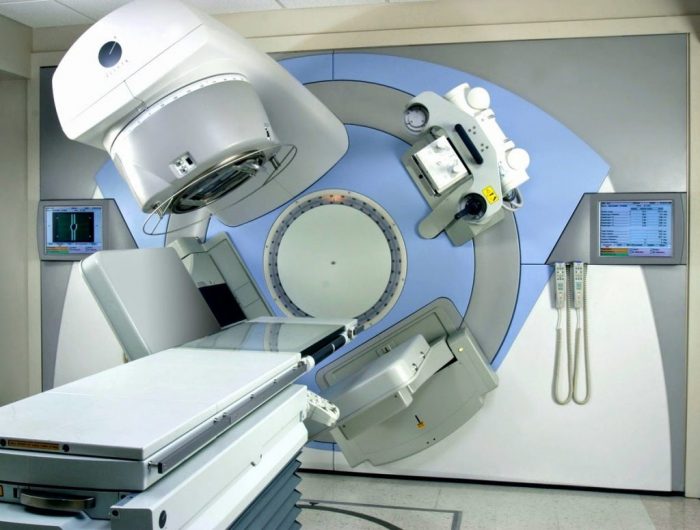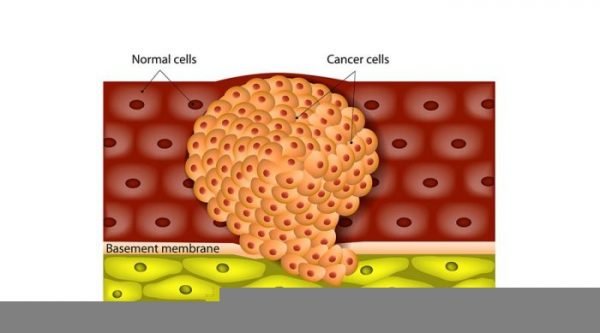ABOUT RADIOTHERAPY
Radiotherapy, which is also referred to as radiation therapy, is a high-energy radiation treatment used to treat cancer. The radiation functions by destroying cells and stopping them from dividing and growing. While the goal of radiation is to destroy cancerous cells, it can also destroy healthy cells within the process.
Radiotherapy can be delivered either externally or internally. External radiotherapy involves applying radiation outside of the body, using a machine that directs the radiation beams at the area being treated. Internal radiotherapy works by placing radioactive material inside the body to directly target the cancer, and this type of treatment is referred to as brachytherapy.
While radiotherapy is primarily used to treat cancer, it can also be used to treat benign tumors and other conditions. Radiotherapy is often used in combination with other cancer treatments such as chemotherapy and surgery. It may be given before surgery to help shrink a tumor to make the surgery easier, or after surgery to treat the remaining cancer, if all of it could not be surgically removed. Radiotherapy can be used as a cure for certain cancers, however in cases of incurable cancers, the treatment is used to help alleviate and control cancer symptoms.
External radiotherapy does not usually cause the patient to become radioactive, however, if receiving liquid radiotherapy or internal treatments (brachytherapy), it may cause the patient to omit some levels of radiation. In such cases, patients should discuss this with the oncologist, as the patient may need to restrict their contact with pregnant women and with children.
The treatment is usually given daily over the course of a number of weeks. After the treatment, it may take some time to see results and for the tumor to shrink.
Recommended for
- Cancer
- Managing cancer symptoms
- Benign tumors
TIME REQUIREMENTS
- Number of days in hospital
Patients will usually leave the same day, however if being performed in combination with chemotherapy, an overnight stay may be required.
- Average length of stay abroad: 1 – 7 weeks.
The treatment is given over the course of several weeks, depending on the individual patient.

HOW TO FIND QUALITY TREATMENT ABROAD
BEFORE RADIOTHERAPY ABROAD
Before the treatment, the oncologist will assess the patient’s overall health and will usually perform an MRI (magnetic resonance imaging) or CT (computed tomography), to locate the cancer and ensure it has not grown or spread since the last scans.
The oncologist will then prepare a treatment plan tailored to treat the patient’s cancer. This may include other treatments to be combined with radiotherapy. They will decide on the dosage of radiation to be used and on how often the patient will need it.
In preparation for the treatment, a simulation machine may be used to help establish the best position for the patient to lie during the treatment and also to plan the direct point where the radiation beams will be aimed at. Ink may be used on the body to mark the exact points where beams are to be directed at.
Patients with complex conditions may benefit from seeking a second opinion before beginning a treatment plan. A second opinion means that another doctor, usually an expert with a lot of experience, will review the patient’s medical history, symptoms, scans, test results, and other important information, in order to provide a diagnosis and treatment plan. When asked, 45% of US residents who received a second opinion said that they had a different diagnosis, prognosis, or treatment plan.
HOW IS IT PERFORMED
When undergoing external radiotherapy, the patient will lie on a table and be positioned according to the area being treated. A machine, commonly referred to as a linear accelerator machine, is then put into position to direct the radiation beams at the targeted area. The patient will need to remain as still as possible throughout the treatment.
During the treatment, the patient will be left alone in the room and a radiographer will be present in an adjoining room, where they can hear and communicate with the patient if needed.
For delivering more intense doses of radiation, there are other technologies available such as CyberKnife treatment, which delivers the radiation via multiple beams and Gamma Knife radiosurgery, which is used to treat cancer in the brain by delivering high-dose radiation using up to 200 small beams. These types of radiotherapies are advanced and more precise, aiming to deliver high-dose radiation directly to the cancer and minimizing the exposure to surrounding healthy cells and organs, as well as decreasing the amount of treatments required.
Internal radiotherapy treatment involves inserting radioactive material into the body to directly target the cancer, either by injection, ingestion, or implantation. Radiotherapy can be delivered in liquid form, either my ingesting a liquid, injecting the radiation material into a vein or by injecting it into the cancerous area being treated.
A radioactive implant can be implanted into the area where the cancer is located and this is referred to as brachytherapy. This radioactive material is usually implanted in the form of seeds and is mostly used to treat prostate cancer. The seeds are left inside the body until the cancer is cured, or until the cells have decreased, depending on the goal of treatment. They are then removed once they have served their function. There are also permanent types of implants, meaning they are not removed after the treatment, however they cause no harm in being left inside the body.
Materials
Radiation
Procedure duration
The Radiotherapy takes 10 to 30 minutes.

Possible discomfort
If radiotherapy is being used to treat throat, neck or brain cancer, then a plastic mask is applied over the face during the treatment to keep the patient still, which may make patients feel uncomfortable.
If the patient receives internal radiotherapy by implant, the process of implanting the material may cause discomfort.
IMPORTANT THINGS TO KNOW ABOUT RADIOTHERAPY
Not recommended for
- Pregnant patients
Potential risks
- Infertility (in rare cases)
Side Effect
- Hair loss
- Nausea
- Vomiting
- Diarrhea
- Mouth sores
- Fatigue















